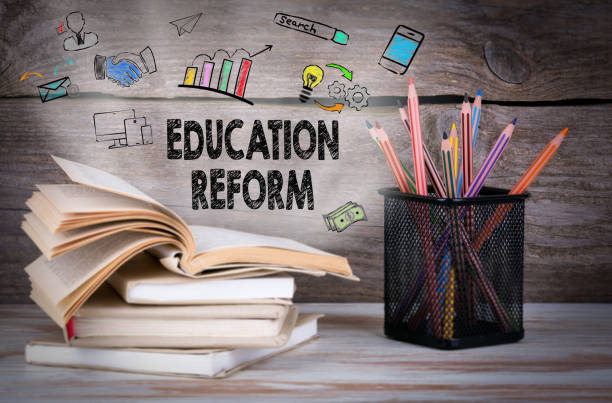Naveed Hussain
Education is a fundamental right of every child, and it plays a crucial role in the development and progress of a country. Education empowers individuals with knowledge, skills, and values that enable them to participate in the economy, society, and politics. It also promotes innovation, creativity, and critical thinking, which are essential for solving complex problems and adapting to changing circumstances.
However, in Pakistan, the lack of access to education for children, particularly those from poor families and living in rural areas, has been a persistent issue. According to recent reports, around 26 million children aged 5 to 16 years are out of school, which is almost 36% of the total number of such children in the country. This high percentage of out-of-school children is one of the highest in the world, with the majority of these children living in rural areas. Additionally, 58% of these children are females, highlighting the need to prioritize their education as well.
The Pakistan Bureau of Statistics has conducted various surveys, including Living Standards and Social Measurement Surveys, which have highlighted the differential access to education of children belonging to different household income quintiles. The enrollment rate of children in the top income quintile is over 150% or twice as high as children in the bottom quintile, depending on the level of education, from primary to high school.
The lack of access to education is one of the main factors contributing to the perpetuation of inter-generational inequality in Pakistan. It not only deprives children of their right to education but also limits their future opportunities and hinders their potential to contribute to the country’s progress and development. However, it’s important to remember that these children, if given the opportunity, could be the future leaders, innovators, and contributors to our society. Raising enrollment rates will also contribute to a more productive labour force, which will ultimately lead to economic growth and social development.
The central issue is whether the expansion of the school system in the country has kept pace with the number of children of school-going age. According to the Academy of Education Planning in the Federal Ministry of Education, the number of primary, middle, and high schools expanded rapidly in the decade of the ’90s, with a combined growth rate of 4.3% annually. However, from 1999-2000 to 2020-21, there has been a big slowdown in the growth in the number of schools to only 1.4% per annum. In line with the slowing down in the rate of expansion of the school network, the growth in the number of teachers annually has been only 2.8%. In fact, the number of teachers combined in both public and private schools has fallen by over 30,000 from 2017-18 to 2020-21.
Moreover, the failure of the education system to expand at a sufficiently rapid rate, especially the school network, explains why net enrollment rates have not risen adequately and the number of out-of-school children remains exceptionally large. The UNDP Global Human Development Report of 2022-23 has vividly highlighted the failure of the educational system of Pakistan. As the Prime Minister, you have the power and responsibility to change this. Your leadership and action are crucial in addressing this issue and ensuring that every child in Pakistan has access to quality education.
The total government expenditure on education has increased from Rs 829 billion in 2017-18 to Rs 1102 billion in 2021-22, according to estimates by the Federal Ministry of Finance. However, this implied a decline in the expenditure as a percentage of the GDP from 2.1% in 2017-18 to 1.6% in 2021-22. The corresponding magnitudes for India and Bangladesh are 4% and 2.2% of the GDP, respectively. This indicates that Pakistan needs to increase its investment in education and prioritize education as a fundamental right of every child.
To address the educational crisis, the government of Pakistan, under the leadership of the Prime Minister and the Chief Ministers, needs to take both short-term and long-term measures. In the short term, the government should prioritize the enrollment of out-of-school children, particularly girls, and improve the quality of education in existing schools. This can be achieved through the provision of infrastructure, trained teachers, and learning resources, as well as awareness campaigns to encourage parents to send their children, especially girls, to school.
In the long-term, Pakistan needs to significantly increase its investment in education and prioritize education as a fundamental right of every child. The government should allocate more resources towards education and seek innovative financing models to mobilize additional funds. It should also focus on improving the quality of education and enhancing the skills of teachers, as well as promoting research and development in education.
Additionally, Pakistan should address the issue of privatization of education, which has led to the creation of a two-tier education system, with the poor left behind. The government should ensure that education is accessible and affordable to all, regardless of their socioeconomic status, and regulate the private sector to ensure quality standards are met.
Overall, Pakistan’s educational crisis is a complex issue that requires a multifaceted approach. It will take sustained efforts and a long-term vision to overcome the challenges and provide quality education to all children in the country.
The lack of access to education for children in Pakistan, particularly those from impoverished families or residing in underdeveloped regions, is not just a problem, it’s a crisis that demands immediate attention from the Prime Minister. Recent reports reveal a staggering figure of approximately 26 million children aged 5 to 16 years who are out of school, constituting nearly 36% of the total number of such children in the country. This alarming percentage of out-of-school children is among the highest globally, with the majority of these children residing in rural areas. Furthermore, 58% of these children are females, underscoring the urgency to prioritize their education as well.
The Pakistan Bureau of Statistics has conducted various surveys, including Living Standards and Social Measurement Surveys, which have highlighted the differential access to education of children belonging to different household income quintiles. The enrollment rate of children in the top income quintile is over 150% or twice as high as children in the bottom quintile, depending on the level of education, from primary to high school.
The lack of access to education is a significant factor contributing to the perpetuation of inter-generational inequality in Pakistan, a consequence that cannot be ignored. Increasing enrollment rates will not only address this inequality but also contribute to a more productive labor force, a crucial aspect for the country’s development. The central issue at hand is whether the expansion in the school system in the country has kept pace with the number of children of school-going age, a question that demands immediate attention.
According to the Academy of Education Planning in the Federal Ministry of Education, which has been publishing the Pakistan Education Statistics annually since the late 90s, the number of primary, middle, and high schools expanded rapidly in the decade of the ’90s, with a combined growth rate of 4.3% annually. However, from 1999-2000 to 2020-21, there has been a big slowdown in the growth in the number of schools to only 1.4% per annum. In line with the slowing down in the rate of expansion of the school network, the growth in the number of teachers annually has been only 2.8%. In fact, the number of teachers combined in both public and private schools has fallen by over 30,000 from 2017-18 to 2020-21.
The failure of the education system to expand at a sufficiently rapid rate, especially the school network, explains why net enrollment rates have not risen adequately, and the number of out-of-school children remains exceptionally large. The UNDP Global Human Development Report of 2022-23 has vividly highlighted the failure of the educational system of Pakistan.
The total government expenditure on education has increased from Rs 829 billion in 2017-18 to Rs 1102 billion in 2021-22, according to estimates by the Federal Ministry of Finance. This has implied a decline in the expenditure as a percentage of the GDP from 2.1% in 2017-18 to 1.6% in 2021-22. The corresponding magnitudes for India and Bangladesh are 4% and 2.2% of the GDP, respectively.
It is imperative for the Prime Minister to convene an urgent meeting on this issue with the four Chief Ministers. Strengthening the education system presents an opportunity for significant change, necessitating a robust resource mobilization effort by the provincial governments and a shift in priorities. Progressive reforms in property taxes, agricultural income tax, and the sales tax on services can contribute to revenue generation for a substantial expansion in the school system and enhancement in the quality of education in Pakistan. Additionally, the BISP (Benazir Income Support Programme) can provide support and an incentive to poor families to send their children to school, furthering the potential for positive change.
















































